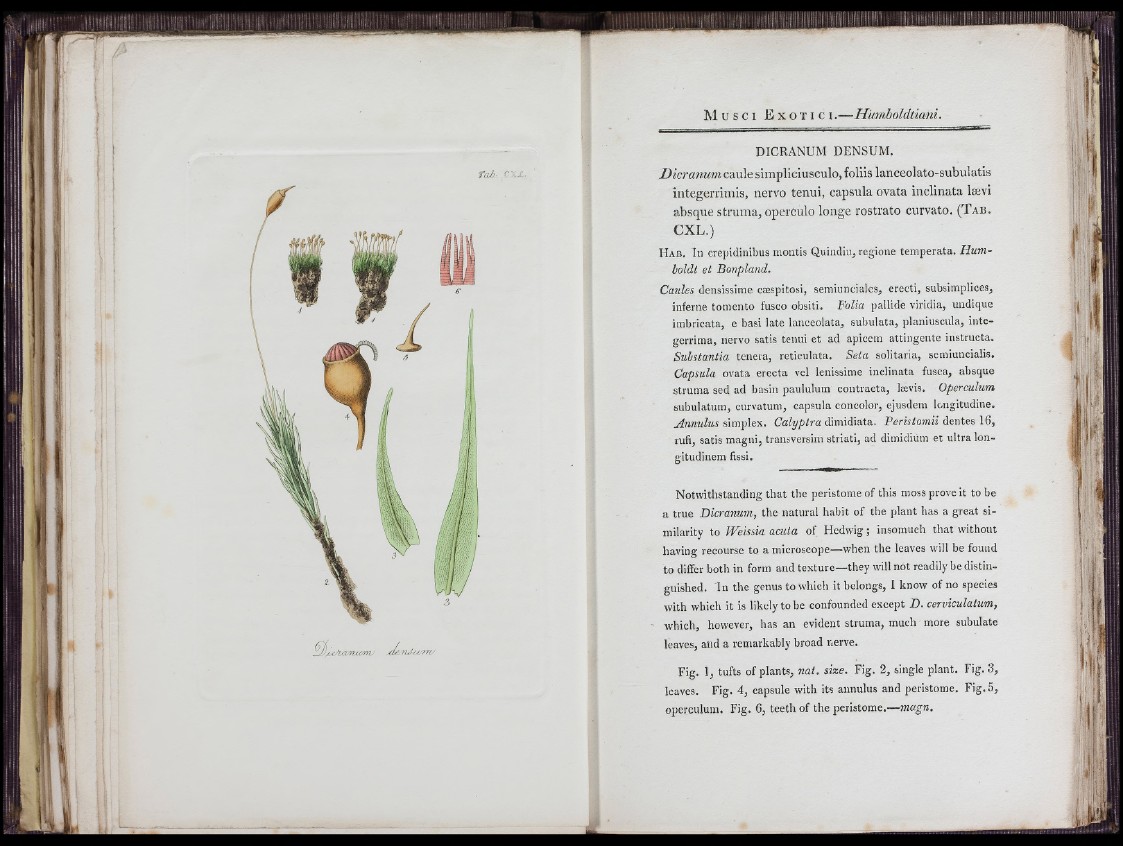
f t .
P-i
, 7
I :
fiLh- <'\X.
TjyAi-tianum-- X i nJ-iym-
Mu s e i E x o t i c i .—Humboldtianì.
c iT S ^ 'iT T - i . i i j a = ^ = Ì II III I.!■»■■■ I I ■! iiii ■« ................s a a « S i g g = ^
DICRANUM DENSUM.
Dicranum caule simpliciusculo, foliis lanceolato-subulatis
integerrimis, nervo tenni, capsula ovata inclinata lævi
absque struma, operculo longe rostrato curvato. (Tab.
CXL.)
Hab. In crepidinibus montis Quiudiu, regione temperata. Hum-
loldt et Bonpland.
Caules densissime cæspitosi, semiunciales, erecti, subsimplices,
inferne tomento fusco obsiti. Folia pallide viridia, undique
imbricata, e basi late lanceolata, subulata, planiuscula, integerrima,
nervo satis tenui et ad apicem attingente instructa.
Sulstantia tenera, reticulata. Seta solitaria, scmiuncialis.
Capsula ovata erecta vel lenissime inclinata fusca, absque
struma sed ad basin paululum contracta, lævis. Operculum
subulatum, curvatum, capsula concolor, ejusdem longitudine.
Annulus s,\mp\e%. CaZyp/ra dimidiata. Peristomii dentes 16,
rufi, satis magni, transversim striati, ad dirnidium et ultra lon-
gitudinem fissi.
Notwithstanding that the peristome of this moss prove it to be
a true Dicranum, the natural habit of the plant has a great similarity
to Weissia acuta of Hedwig ; insomuch that without
having recourse to a microscope—when the leaves will be found
to differ both in form and texture—they will not readily be distinguished.
In the genus to which it belongs, I know of no species
with which it is likely to be confounded except D. cerviculatum,
which, however, has an evident struma, much more subulate
leaves, and a remarkably broad nerve.
Fig. 1, tufts of plants, nat. size. Fig. 2, single plant. Fig. 3,
leaves. Fig. 4, capsule with its annulus and peristome. Fig. 5,
operculum. Fig. 6, teeth of the peristome.—??2ag-rz.
%
II
il